
Car Design News: Letter from Shanghai
Chinese car design is all about speed and technology, right? A visit to Shanghai reveals a more nuanced picture that poses more questions than it answers
Shanghai is China’s creative capital. Positioned at the mouth of the Yangtze, the city has, by invention, been more open to the world than its landlocked brethren in the country’s vast interior. With that has come tremendous opportunities, and not a little risk. The buildings tell a story of a prosperous and occasionally highly fraught relationship with the western world. It is architecturally rich: a seam of Deco buildings line the west bank of the Bund facing the glittering skyscrapers across the river. The new Shanghai – confident, energetic and constantly looking forwards.
Until recently, it was natural to see this division as a metaphor for the car industry. Established western brands conferred high-status upon their owners thanks to a heritage and expertise honed over decades. The newer homegrown brands were shinier, more tech-focused and cheaper: cars as consumer products. But this coexistence was always a slightly uneasy one given China’s ambitions – the country was never likely to play second fiddle to overseas brands indefinitely. The pandemic forced China to turn inward and its effects were exacerbated by a particularly harsh lockdown in March 2022: those who could, left. When things began opening up, the scenery had shifted.
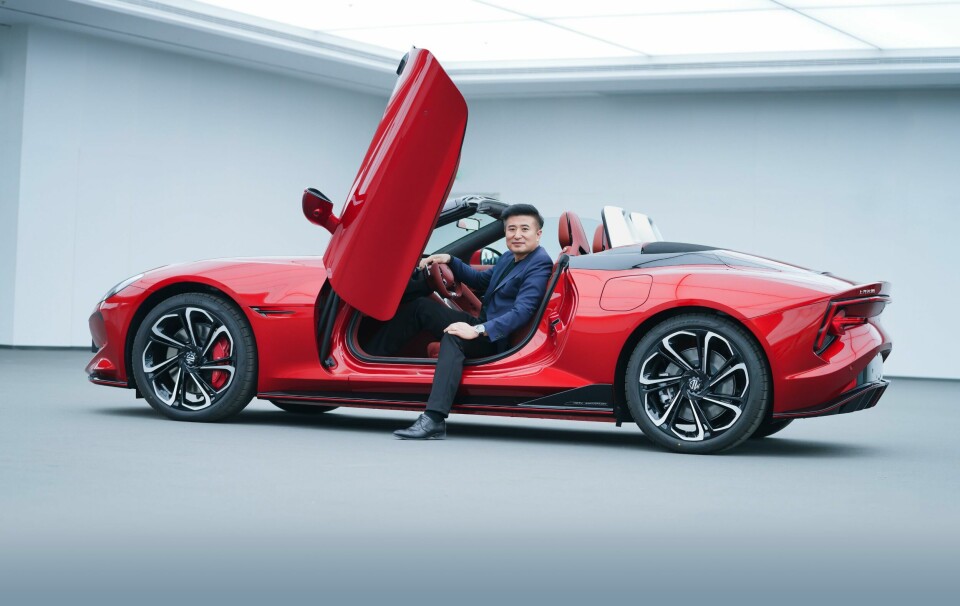
Today, Chinese car brands, which seem to be popping up weekly, appear to be in the ascendancy while the established global brands from Europe, the US, Japan and Korea are stalling. The differentiator – quality – equalised and the lightning-fast adoption of EVs paired with an insatiable appetite for new technology meant China had leapfrogged mid-market European brands to trade punches with premium contenders.
Standard dress code is a fastback sedan with clean front face, soft musculature with little defining crease lines and a coast-to-coast rear light signature
This is the famous ‘China Speed’. There is, however, a feeling among senior designers that the velocity of the market coupled with a slowing economy has ushered in a more conservative approach to design. And indeed, studying the cars on the streets of Shanghai betrays a homogeneity of form language. Standard dress code is a fastback sedan with clean front face, soft musculature with little defining crease lines and a coast-to-coast rear light signature. “If you took the badges off them, you would not be able to tell the difference,” says Shao Jingfeng, SAIC’s design boss. “It is what I call ‘faceless design’.”
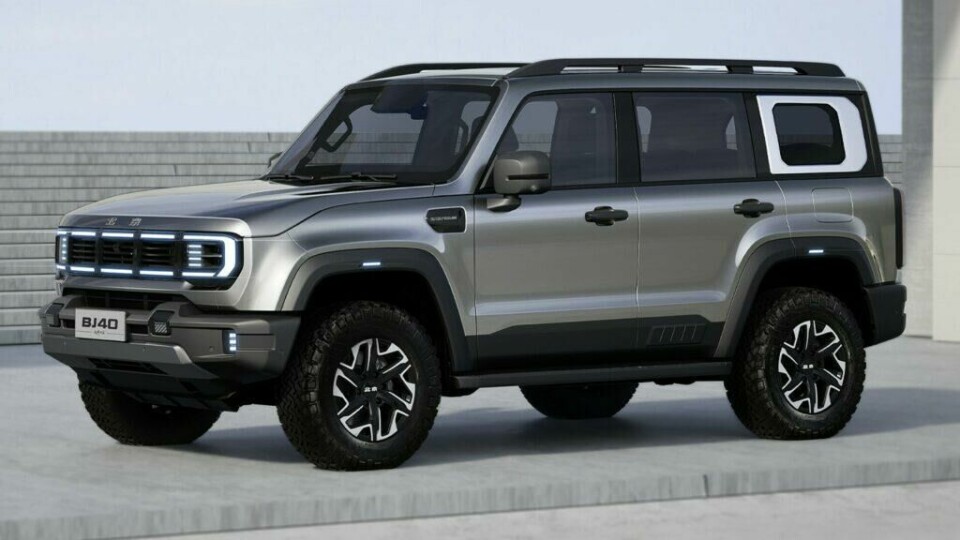
“When EVs were just becoming popular, it was OK because it was a way of reading a car as electric,” he adds. “But now 50% of the market is EVs. You cannot just cover the face – that’s too simple. Designs need to be cleverer.” Under Jingfeng’s tenure, SAIC has pushed the boundaries more than most: the recent Cyber GT a case in point. The brand will reveal its new design DNA in the next six months and Jingfeng is phlegmatic about the market’s turbulence. “Five years ago, there were 300 new brands. Now there are maybe 50, a lot have died. I think the government is looking to see who can build a brand and sustain it. We keep calm and carry on,” he smiles.
Brands that have stepped outside the comfort zone have encountered setbacks. Li Auto’s spaceship ‘Mega’ MPV dared to be different and flopped.
Ziqian Yu is head of BAIC Shanghai Design studio, which is located on the site of a former brewery. Yu is schooled in European design thinking with 10 years under his belt at Citroen and DS brands in China. “We pushed hard for what I call artistic design,” he says. “But that type of creativity is no longer enough. Customer needs are the most important: space, great UX and quality.” BAIC successfully parlayed its foundation in military and agricultural vehicles into a civilian off-roader, which aims to embody these customer needs. The design is solid but unspectacular and with good reason:, brands that have stepped outside the comfort zone have encountered setbacks. Li Auto’s spaceship ‘Mega’ MPV dared to be different and flopped.
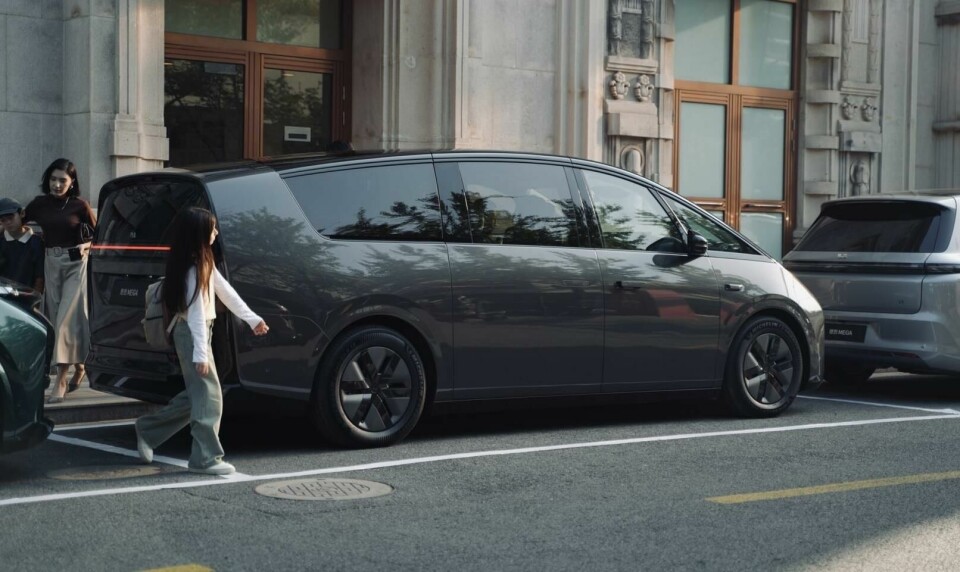
Looking at the patterns of automotive history is instructive. Markets have tended to follow a four-phase journey: copying, economic growth and expansion, recession and a resultant retreat to safety, and finally maturity. We saw this with Japan and later Korea. China is currently in the third phase and the sense is there will be a thinning of the herd as new brands fail. Daring to be different at this critical moment is less than wise.
Still, the lust for the new and the corresponding speed of development is a dizzying cocktail. General Motors has an impressive and still pretty new studio in Shanghai, headed up by Stuart Norris. GM via Buick put US cars on the map in China – the accomplished GL8 MPV is a common sight on the roads here. But there is no room for complacency, even with a legacy like this. “At times, it feels like you are racing ahead just to keep up,” says Norris, who frontloads the development of new models with design -work to create efficiencies later in the process. Unlike many studios in Shanghai, which are digital-only, the US giant has world-class clay modelling facilities on site, which, when coupled with early digital work, allows more time for surface refinement.
Futurism is important to the consumer here, but there is also a distinction between “true tech” and “performative tech”
“The lack of time means it is hard to experiment and explore different possibilities,” he says. “We need more and more intelligence and data to work with.” GM has a software services team that feeds into the design software team, to keep the carmaker ahead of the curve when it comes to UX. “We did some research that showed the average number of interactions on a touchscreen in North America is 28. In China, it is 65.”
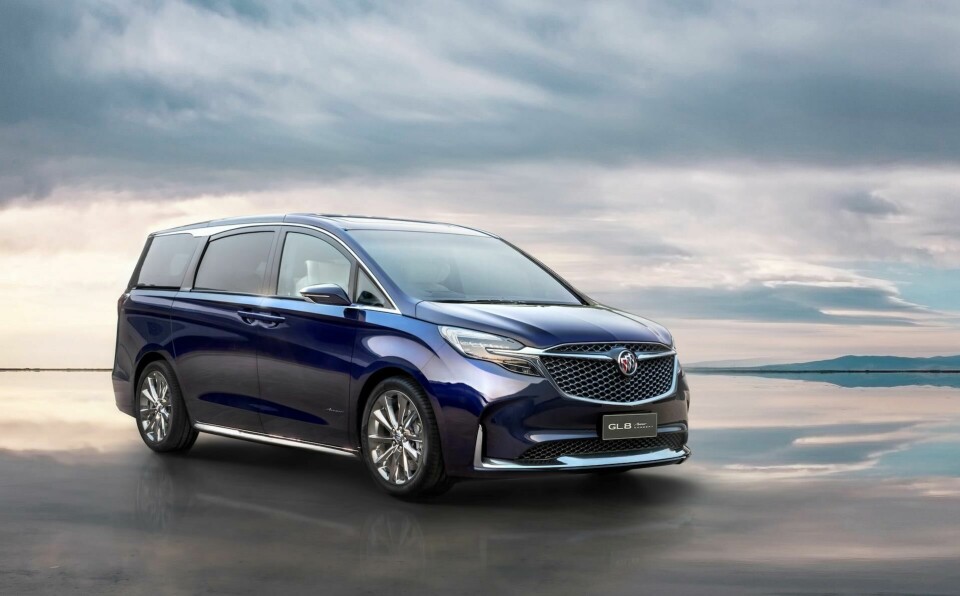
Great UX means something a little different in China. Desirable functions include the option to practise karaoke or play video games. Through western eyes, it is all -too easy to dismiss these touches as gimmicks. That would be a mistake. “Futurism is important to the consumer here, but there is also a distinction between ‘true tech’ and ‘performative tech’,” says Sandy Hartono, design director of GAC Advanced in Shanghai. Though serving different purposes – pragmatic needs versus sheer entertainment – both matter.
In the weeks prior to CDN’s visit to Shanghai, Jidu unveiled Robocar 07. Backed by Baidu (China’s Google) and using Geely’s SEA platform, Jidu 07 is svelte sedan with seductive massing that builds on the 01 crossover of 2023. But the real story is the AI-driven technology that promises Level 4 autonomy. Frank Wu is Jidu’s chief design officer and presides over a frighteningly young team recruited from software companies like Baidu, Tencent and TikTok. “We aren’t really a car company, we are an AI tech company,” says Wu.
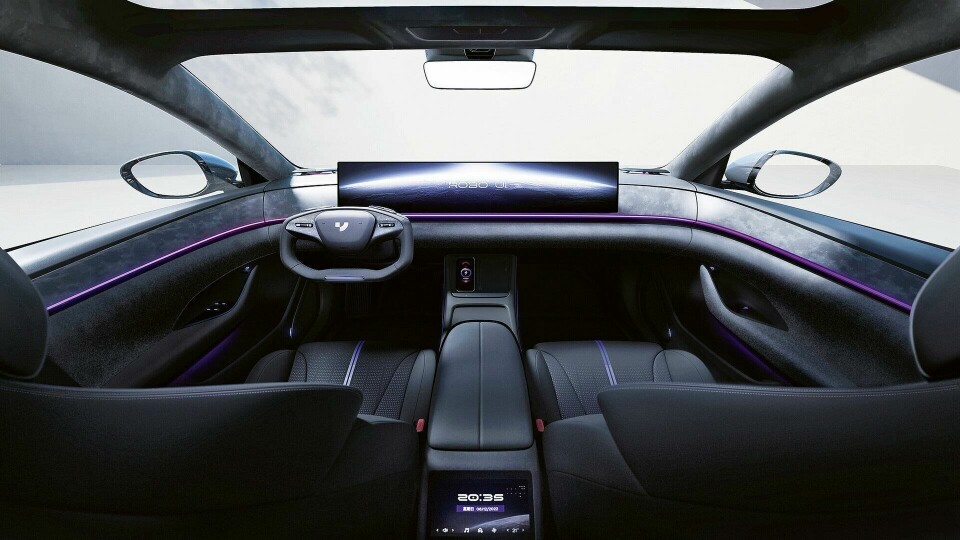
That expression will be familiar to anyone paying attention, but it’s hard to deny here. The technology is impressive – in a test drive, the 07 negotiated its way through mildly chaotic Shanghai traffic while Wu sat in the driver’s seat. Motorcycles, random bicycles and trucks all appeared on the virtual map and were avoided by the system. Later, through voice commands, the 07 demonstrated its ability to reverse park in a very crowded car park. And yes, you can play video games while the 07 performs its tasks.
It is interesting to ponder whether the “Design Thinking” approach may be swamped by unthinking AI slop in the near future
“We don’t style, though we design beautiful cars. Our philosophy and fundamentals are completely user-experience driven,” says Wu. In the face of such incredible tech, discussing details like belt lines and masks seems like yesterday’s discussion. Nevertheless, the voice-activated system poses an interesting cultural question: how comfortable would various nationalities be talking to their car in public? For Chinese or Americans it would pose no issue. But what about countries where silence in public is a given. Japan, for example.
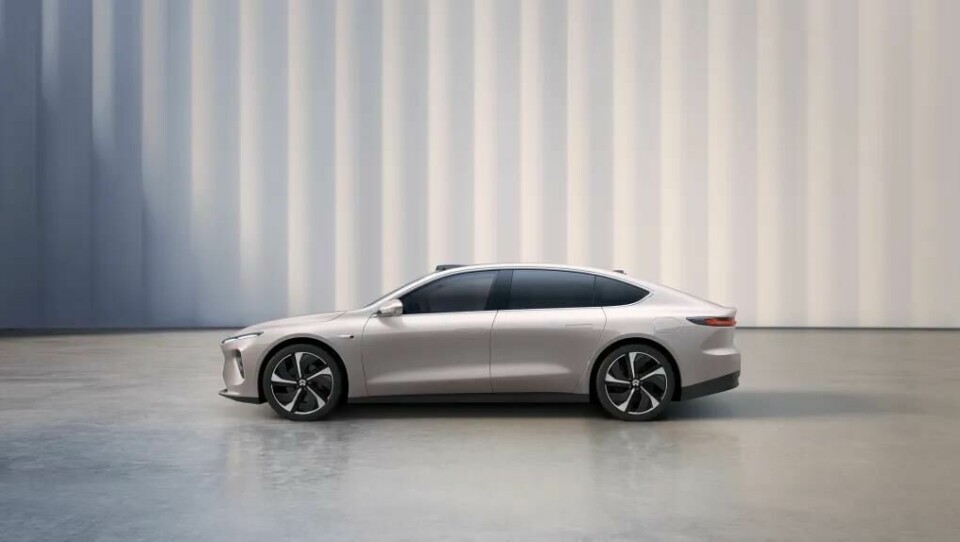
While Jidu is still a start-up, another new brand, Nio, is entering a new phase. “We have released some great singles, but now it is time for a whole album,” says design director Colin Phipps. Working across studios in Munich and California, in 2020 the brand flattened out hierarchies via advanced design technology and a redesign of its studio space. Though not well-known in Europe yet, in China it’s openly eyeing Tesla’s lunch. “We offer an alternative to what I call “Darth Vader” luxury, which misses out the joy,” says Phipps.
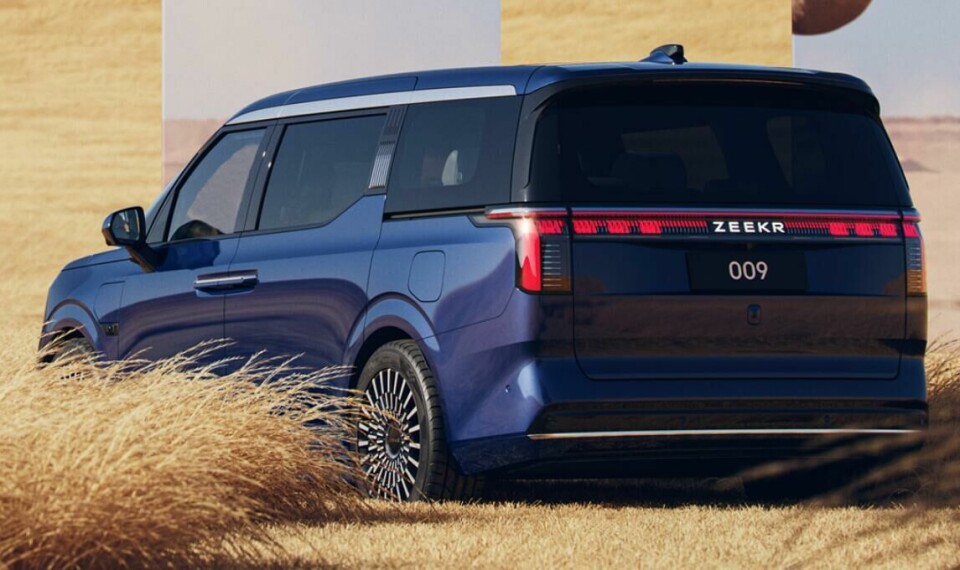
Nio is targeting its premium offer at a different consumer as evidenced by its “Nio Days” where owners converge at extravaganzas that feel more like an Olympic opening ceremony than a car launch. Though Nio conforms to some of the Chinese car design signifiers, there has been a steady maturing of its offer thanks to its attention to the user experience. “We are connected to customers through phone data, but qualitative conversation is far better,” says Phipps. “Observation is the best form of research: that gives you the “why’”. The “why” is what interests Phipps and feeds into Nio’s recruiting strategy, too. “We want makers and doers,” he continues. “I can see beautiful portfolios but show me the action. How did you get there?”
While “design thinking” has been a staple of Western education since the late 1950s with figures like Leonard Bruce Archer, in China it is still new. Indeed, it is interesting to ponder whether that approach may be swamped by unthinking AI slop in the near future. And though the standard of designers graduating from schools such as Beijing’s Central Academy of Fine Arts (CAFA), Shanghai’s Chinese Academy of Art (CAA) and the Nanjing University of Science and Technology, is greatly improved, there is still value in European- style “why” questions.
It is not about the car anymore
Head of Zeekr’s Shanghai studio is Javier Garcia-Gallardo who moved from the brand’s Gothenburg studio early in 2024. The Geely-owned brand operates an exchange programme with designers from the Swedish office to promote cultural exchange and develop skills. “China is building its car culture,” says Garcia-Gallardo. “With Europe, car design followed art movements, here it follows technology.” The speed at which technology evolves poses challenges, but the Spaniard speaks highly of his suppliers. “They produce super-fast and very high-quality models. It is very impressive.”

There is more to the Chinese market than speed but for OEMs to survive, it must be a given. From pressing go on a programme to production can happen in as little as two years. Sometimes less. Is this sustainable? Certainly, but for the short term. Further ahead, the accelerationist approach will create an industrial Darwinism where the strongest will survive.
Breaking free from a homogenous design-language is desirable but in the hierarchy of needs creating a holistic product that delivers an unparalleled user-experience is more important. It is not about the car anymore, at least in China. Designers of all stripes will need to call upon every ounce of ingenuity and knowledge to meet that challenge.




